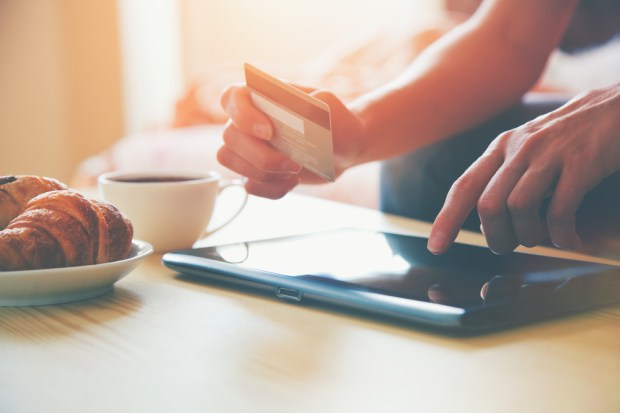Apple Pay On The Web — It’s All About The ‘A’

Apple is about to take on PayPal and is launching Apple Pay on the Web. This will allow Apple Pay to reach those customers who don’t like shopping using a mobile phone or who prefer to shop via the web. The downside is that shoppers must have a Mac, an iPhone and the Safari browser.
Since Apple Pay launched almost two years ago, it has been frequently matched up in headlines “against” PayPal. Typical questions for headline writers over the last year have including musings on whether PayPal could keep up with Apple, whether Apple could catch up with PayPal or which experience users like better.
And while those questions made for some pretty good reading, they all suffered from a similar defect: Until very recently, comparing Apple and PayPal was (nearly literally) an “apples and oranges” sort of comparison. Sure, they were both payments platforms — but not entirely similar ones. Apple’s main theater of operation was initially focused on mobile in-store transactions powered by Touch ID, tokenization and NFC. PayPal’s main theater of operation was digital payments powered mainly by access to the internet via desktop and, more recently, mobile. There was some overlap — particularly with the launch of PayPal One Touch — in-app, but mostly, Apple Pay and PayPal didn’t compete very much head-to-head.
But the world is changing, and all of those “vs” headlines are about to get a little more interesting.
Apple Pay on the Web launched yesterday (Sept. 13).
The launch is not for the whole web — PayPal won’t be racing with Apple in Chrome or Internet Explorer, since only the Safari browser can pay online via a “Pay with Apple Pay” button. Apple Pay on the Web also remains Apple device-dependent; bioauthentication must be done using Touch ID on a phone or watch.
How much will it affect PayPal? Hard to say. Apple remains committed to keeping its payment platform walled within its own garden, meaning users have to be very into Apple products to use Apple Pay on the Web. PayPal is currently the most popular alternative online payment method today given its wide and growing merchant acceptance, and while some are claiming Apple Pay will be a faster checkout than PayPal on sites where they both appear, it is unclear if a slightly faster Apple Pay will induce current PayPal users to re-orient all their online payments around Mac computers, an iPhone/Apple Watch and Apple’s Safari web browser. (Unlikely.) As for customers not yet captured, it is possible that Apple will convince more of the unconvinced that its button is better, but it will come down, again, to where customers can use it.
But on the web is not the only place Apple and PayPal will have more chances to meet head-to-head. With its recently announced partnerships with Visa and Mastercard, PayPal is coming to in-store purchases. No matter what device one has — or who issued the card — it seems, as long as it has a Visa or Mastercard logo on it, it will ride the Visa/Mastercard tokenized digital rails.
And that might be worth watching out for because, unlike Apple Pay, PayPal will run on almost any smartphone, and 80 percent of the phones in the market are Androids, not Apples.
A race that was once happening remotely — with the two contestants warming up in separate venues — is now actually lining up at the starting line. Apple Pay has all the buzz, but it might be important that, at this point, PayPal has all the scale.
And a lot more of that “A” word — acceptance.
